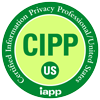ICH E6(R2) – Addendum Highlights/CSV & Data Integrity
May 10, 2017
The Integrated Addendum to ICH E6(R1): Guideline to Good Clinical Practice E6(R2) was finalized in November 2016.
The Integrated Addendum is a significant update to the 20-year-old ICH GCP Guideline originally adopted in 1996.
The ICH website states:
“This guideline has been amended to encourage implementation of improved and more efficient approaches to clinical trial design, conduct, oversight, recording and reporting while continuing to ensure human subject protection and reliability of trial results. Standards regarding electronic records and essential documents intended to increase clinical trial quality and efficiency have also been updated.”
Much of the content now incorporated into ICH through the Integrated Addendum is familiar from other guidance documents and enforcement interpretations by EMA and other regulators, including MHRA and FDA, which have developed over recent years. This is particularly true with respect to the expectation that risk-based approaches will be applied to a broad range of clinical trail activities from computerized system validation to trial monitoring.
In the Addendum, expectations for a number of computerized System Validation elements and activities have been sharpened and clarified. The EMA Inspectors Working Group has been focused for several years on concerns about how computer systems used to support clinical trials are designed and implemented.
Concern has been particularly focused on data integrity and investigators’ independent access to and control over the data they provide to sponsors. There has also been a sharp focus on the impact the systems that electronically collect and manage data can have on subject and patient rights and safety.
The Addendum specifically cites the need to maintain data integrity at all times. It is important to remember that metadata (e.g., units of measure, lab test names, etc.) are a vital consideration here, and not just the audit trail. Of course, everything that happens to the data must be reflected either in the audit trail or in other documentation of change control. It is important to remember that changes to infrastructure or the application itself application can affect data, so accurate, complete, and contemporaneous documentation of authorized changes are reuired to demonstrate sustained data integrity.
Data integrity demands that all changes must be controlled. That means they must be understood, documented, tested/verified, and approved. Documentation and risk assessment are essential.
Data migration is particularly risk prone. The Addendum now means ICH requires risk-based validation and full documentation.
